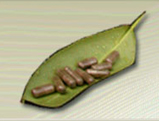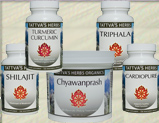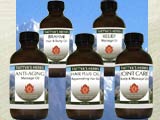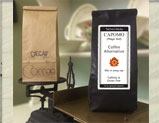 Loading... Please wait...
Loading... Please wait...Blog - Turmeric India
Turmeric – Contemporary applications in medicine
Posted on 8th Dec 2009
Turmeric exemplifies an herb for which clinical applications have evolved over time. Until recently, this perennial herb, widely cultivated in tropical regions of Asia, particularly in India, was valued primarily as a commercial item for imparting a lively yellow color and also as a part of most curry powders. In India, the Bengal kind of Turmeric is preferred for dyeing purposes, and the Madras kind is preferred for flavouring purposes. The long established image of turmeric as a commercial dyestuff and component of curry 6 was partly responsible for overshadowing its importance as a medicinal herb. The significance of turmeric in medicine has changed considerably since the discovery of the anti-oxidant properties of naturally occurring phenolic compounds.. The same ground dried rhizome of Curcuma longa, which has been used for centuries as a spice, food preservative and a coloring agent, has been found a rich source of phenolic compounds or curcuminoids. Curcuminoids refers to a group of phenolics present in turmeric, which are chemically related to its principal ingredient, curcumin. Three main curcuminoids were isolated from turmeric: curcumin, demethoxycurcumin and bisdemethoxycurcumin. All three impart the hallmark yellow pigmentation to Curcuma longa plant, and particularly to its rhizomae.
Although the chemical structure of curcumin was determined by Lampe in 1910, it was only in the seventies and eighties that the potential uses of curcuminoid compounds in medicine have been studied. The ongoing laboratory and clinical research indicates that turmeric and its phenolics have unique anti-oxidant properties 8,10,11,12,13,14. These interesting findings on curcuminoids, as well as concerns over toxicity of synthetic phenolic antioxidants such as butylated hydroxytoluene (BHT) and butylated hydroxyanisole (BHA), have further stimulated interest in natural phenolics for medicinal and food applications. © Sabinsa Corporation 2000















